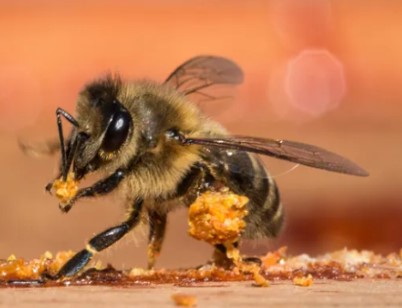Collecting resin is another job assigned to field worker bees in addition to colleting pollen, water and nectar. Here in the PNW there are plentiful plants and trees producing resin to choose from and the Honey Bees are not selective. The resin is collected in the Honey Bees pollen baskets, brought back to the hive. Working collectively with older hive bees they begin the process of creating Propolis.
When the Honey Bees bring in the resin collection, they begin working with older hive workers. The sticky resin substance is chewed off of the field bees pollen basket. By chewing the resin, the hive worker bee is also mixing its salivary enzymes in with the resin making the resin pliable. The substance is mixed with beeswax from the older honey bees slightly atrophied wax glands. Finally, propolis emerges and distributed throughout internal areas of the hive sealing, waterproofing, strengthening and smoothing out all surfaces, frames and entrances.
Resin is produced from a plants resin cell. The sticky substance excreted from the plant/ conifer as a response mechanism when a plant or conifer has sustained damage. When mixed with the honey bee special salivary enzymes and beeswax the final product, Propolis, is a powerful concoction that helps control pathogen diseases by sealing the hive from wind transport. Propolis acts as an antiseptic to protect larvae & honey bee foundation from microbial infection thus contributing to overall Honey Bee health. Propolis final compounds are 50% resin, 30% wax and oils, 10% salivary secretions, 5% pollen, and 5% amino acids, vitamins, and minerals.
How do Honey Bees create Propolis

